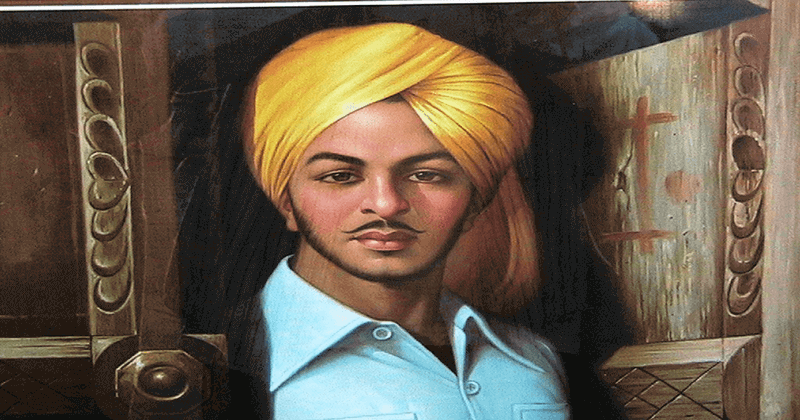
I have often noticed that the certain antiques and valuables that belong to India are not in India but in foreign exhibitions and museums.
So it is no surprise to me that one of India’s famous freedom fighter’s trial records are not within the country.
But since this freedom fighter is also a hero in that nation.
The Pakistan government will for the first time put on display the case file of the trial of legendary Indian freedom fighter Bhagat Singh among other historical documents in Lahore on Monday.
This was decided at a meeting of the Punjab government’s top bureaucrats, headed by chief secretary Zahid Saeed, which proclaimed the revolutionary as a “hero of both India and Pakistan”.
READ ALSO: Modi pays tribute to Iconic Freedom Fighter on his birth anniversary
“The meeting decided that Bhagat Singh was the independence movement hero of both India and Pakistan. The people of the country have the right to know about his [Singh’s] and his comrades’ great struggle to get freedom from the British Raj,” an official of the Punjab government told a leading news agency on Sunday.
The Anarkali tomb in Lahore, which houses the Punjab Archive Department, has been chosen as the venue for the exhibition.
The official said letters written by Singh from jail to his father beside books, newspapers, records of the hotels where he and other freedom fighters stayed when underground are also to be included in the exhibition.
The applications Singh had written demanding provision of facilities bear his signature.
“The revolutionary significantly did not end each application with the customary ‘yours truly’ or ‘obediently’. Instead, he chose the words ‘Yours etc. etc.’ showing his resilience in the face of tyranny,” the official said.
READ ALSO: Bhagat Singh Birthday Special: 5 Bollywood movies about the freedom fighter that you must watch
The case file contents to be displayed also include the court’s order convicting Singh and his associates, Rajguru and Sukhdev, black warrants and the jailer’s report confirming their hanging.
The locations where Singh and his associates used to stay, including a factory on Ravi Road, a rented house in Gowalmandi, another in Mozang and in Kashmir Building on McLeod Road, the admission register of a comrade from the DAV college, books, novels and revolutionary literature Singh used to read are also being displayed.
The books include ‘Punjab Tragedy’, ‘Zakhmi Punjab’, ‘Ganga Das Dakoo’, ‘Sultana Dakoo’, ‘The Evolution of Sinn Fein’ and ‘History of the Sinn Fein Movement’.
The case files contain documents showing how the police and agencies in British-ruled India had tracked down Singh and around 25 fellow freedom fighters from different parts of India and established their links with revolutionary fora like Hindustan Socialist Republican Army and the Naujawan Bharat Sabha.
Singh was hanged by the British colonizers on March 23, 1931, at the age of 23 in Lahore, after being tried on charges of conspiring against the colonial government. A case was filed against Singh, Sukhdev, and Rajguru allegedly for killing British police officer John P Saunders.
The documents to be displayed also include postmortem reports of Saunders and a constable, Charan Singh, the official said.

Post Your Comments